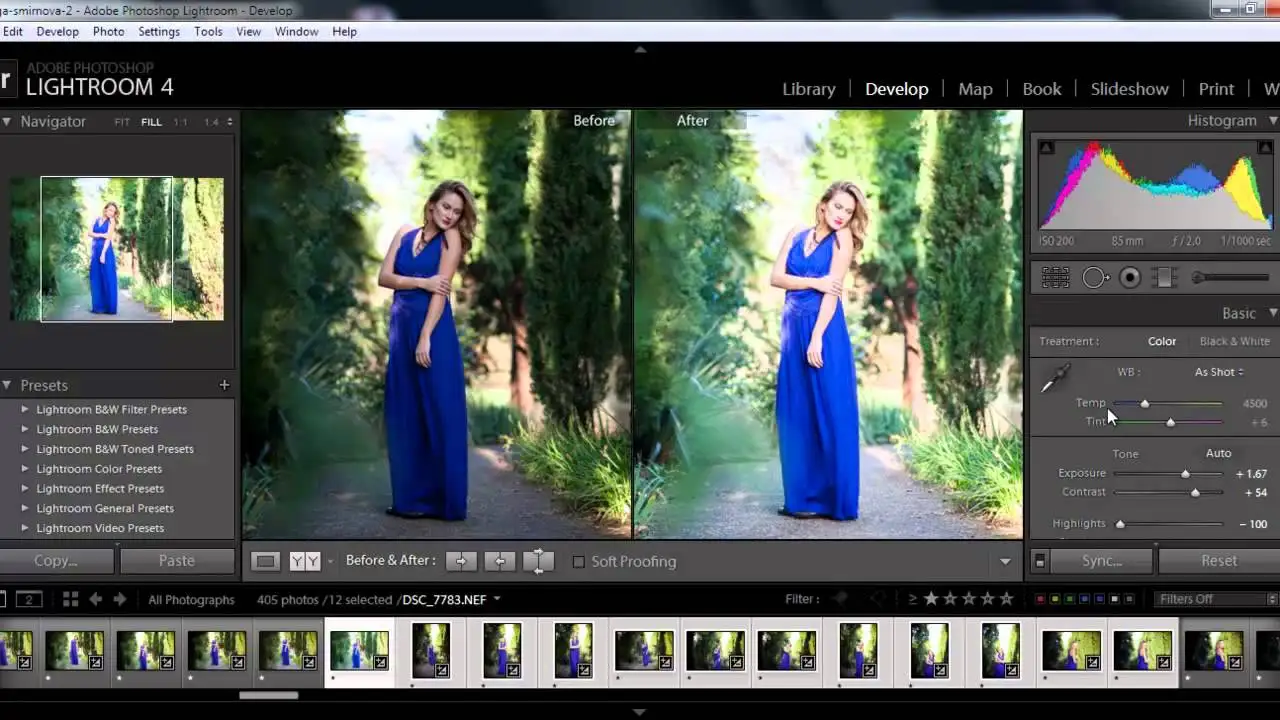Lens Hoods: Protecting Your Lens and Improving Image Quality
Lens hoods are often overlooked, but they're essential accessories for any photographer. They protect your lens from stray light, preventing flare and improving contrast. This article dives deep into the world of lens hoods, explaining their benefits, different types, and how to choose the right one for your needs. We'll also recommend some specific models and discuss their ideal use cases, comparing their features and prices to help you make an informed decision.

Alright, let's talk lens hoods. They might seem like a small, insignificant piece of plastic (or sometimes metal!), but trust me, they can make a world of difference in your photos. Think of them as sunglasses for your camera lens. They shield the front element from unwanted light, which can drastically improve image quality.
Understanding Lens Flare and Image Contrast Problems
So, what exactly does a lens hood do? The main job is to block stray light from hitting the lens element. This stray light can cause lens flare – those annoying bright spots or hazy areas in your photos. Flare reduces contrast and can wash out colors, making your images look dull and lifeless. A good lens hood minimizes flare, resulting in sharper, clearer images with more vibrant colors. Imagine shooting a sunset with the sun just outside the frame – without a hood, you're likely to get a lot of flare. With a hood, you'll capture the scene with richer colors and better contrast.
Different Types of Lens Hoods: Choosing the Right Style
Lens hoods come in a few different shapes and sizes, each with its own advantages and disadvantages. The most common types are:
- Petal (or Tulip) Hoods: These are shaped like flower petals and are designed to provide maximum coverage while minimizing vignetting (darkening of the corners of the image). They're often used with wide-angle lenses. The petal shape allows for more precise light blocking based on the lens' field of view.
- Cylindrical Hoods: These are simple, straight tubes that offer good protection from light. They're typically used with standard and telephoto lenses. Their straightforward design makes them durable and effective.
- Square Hoods: Less common, square hoods are often found on rangefinder cameras and some vintage lenses. They offer excellent coverage and a unique look.
- Retractable Hoods: Some lenses have built-in retractable hoods. These are convenient but may not be as effective as dedicated hoods.
Choosing the right type depends on your lens and shooting style. For wide-angle lenses, a petal hood is generally the best choice. For longer lenses, a cylindrical hood will usually suffice.
Material Matters: Plastic vs Metal Lens Hoods
Lens hoods are typically made from either plastic or metal. Plastic hoods are lighter and less expensive, but they may not be as durable as metal hoods. Metal hoods are more robust and can provide better protection for your lens, but they're also heavier and more expensive. Consider the environment you'll be shooting in. If you're often in harsh conditions, a metal hood is a better investment. For casual shooting, a plastic hood is often perfectly adequate.
Specific Lens Hood Recommendations and Usage Scenarios
Alright, let's get into some specific recommendations. Here are a few lens hoods I've used and can vouch for:
- Nikon HB-32 Lens Hood (for Nikon 18-200mm and similar lenses): This is a standard petal hood that provides excellent protection and flare reduction. It's made of durable plastic and is relatively inexpensive. Use Case: General photography, travel, landscapes. Price: Around $20.
- Canon EW-73B Lens Hood (for Canon EF-S 17-85mm and similar lenses): Another great petal hood for Canon users. It's well-built and provides good coverage. Use Case: Street photography, portraits, everyday shooting. Price: Around $25.
- Haoge LH-X54B Square Metal Lens Hood (for Fujifilm X100 Series): This is a stylish and functional square hood for Fujifilm X100 series cameras. It adds a vintage look to your camera while providing excellent protection. Use Case: Street photography, documentary, black and white photography. Price: Around $40.
- B+W Metal Lens Hood (Various Sizes): B+W makes high-quality metal lens hoods in various sizes. These are a great option if you want a durable and reliable hood. Use Case: Professional photography, harsh environments, long-term use. Price: Varies depending on size, but typically around $50-$80.
Comparing Lens Hood Features Price Points and Performance
When choosing a lens hood, consider these factors:
- Material: Plastic is cheaper and lighter, while metal is more durable.
- Shape: Petal hoods are best for wide-angle lenses, while cylindrical hoods are good for standard and telephoto lenses.
- Size: Make sure the hood is the correct size for your lens.
- Price: Lens hoods can range from a few dollars to over $100.
- Brand: Reputable brands like Nikon, Canon, B+W, and Haoge offer high-quality hoods.
Let's compare some of the hoods mentioned above:
| Lens Hood | Material | Shape | Price | Pros | Cons |
|---|---|---|---|---|---|
| Nikon HB-32 | Plastic | Petal | $20 | Inexpensive, good coverage | Plastic may not be as durable |
| Canon EW-73B | Plastic | Petal | $25 | Well-built, good coverage | Plastic may not be as durable |
| Haoge LH-X54B | Metal | Square | $40 | Stylish, durable | More expensive |
| B+W Metal Lens Hood | Metal | Cylindrical | $50-$80 | Very durable, high quality | More expensive |
Lens Hoods for Wide Angle Lenses: Minimizing Vignetting
Wide-angle lenses are particularly susceptible to vignetting when using the wrong lens hood. That's why petal hoods are generally recommended for these lenses. The petal shape is designed to provide maximum coverage while minimizing vignetting. When choosing a hood for a wide-angle lens, make sure it's specifically designed for that lens to avoid any unwanted darkening of the corners.
Using Lens Hoods in Different Weather Conditions
Lens hoods aren't just for sunny days. They can also be helpful in rainy or snowy conditions. They can protect your lens from raindrops and snowflakes, keeping your images clear. Just be sure to wipe off any water or snow that accumulates on the hood.
Cleaning and Maintaining Your Lens Hood: Keeping it in Top Shape
Like any piece of camera equipment, your lens hood needs to be cleaned and maintained. Use a soft cloth to wipe off any dust or dirt. For stubborn stains, you can use a mild soap and water solution. Avoid using harsh chemicals or abrasive cleaners, as these can damage the hood.
Alternative Uses for Lens Hoods: Beyond Flare Reduction
While their primary purpose is to reduce flare, lens hoods can also be used for other things. They can provide physical protection for your lens, preventing scratches and bumps. They can also help to keep your lens clean by blocking dust and debris. Some photographers even use lens hoods as a makeshift lens cap in a pinch.
The Importance of Proper Lens Hood Installation and Fit
It's crucial to ensure your lens hood is properly installed and fits securely. A loose hood can be ineffective and may even fall off. Most lens hoods have a bayonet mount that clicks into place. Make sure you hear the click to ensure the hood is properly attached. If your hood has a screw-in mount, tighten it securely, but don't overtighten it.
Third Party Lens Hoods vs Original Manufacturer Options
You have the option of buying lens hoods made by the original lens manufacturer (like Nikon or Canon) or third-party manufacturers. Original manufacturer hoods are often more expensive, but they're typically made to the highest standards. Third-party hoods can be a more affordable option, but it's important to choose a reputable brand to ensure quality and compatibility.
Lens Hoods for Video Shooting Considerations and Benefits
Lens hoods are just as important for video shooting as they are for photography. They can prevent flare and improve contrast, resulting in more professional-looking footage. They can also protect your lens from accidental bumps and scratches, which is especially important when shooting on location.
DIY Lens Hoods Creative Alternatives and Solutions
If you're on a tight budget, you can even make your own lens hood. You can use cardboard, foam, or even a plastic cup. Just make sure the hood is the correct size and shape for your lens. While DIY hoods may not be as durable or effective as professionally made hoods, they can be a good option in a pinch.
:max_bytes(150000):strip_icc()/277019-baked-pork-chops-with-cream-of-mushroom-soup-DDMFS-beauty-4x3-BG-7505-5762b731cf30447d9cbbbbbf387beafa.jpg)





